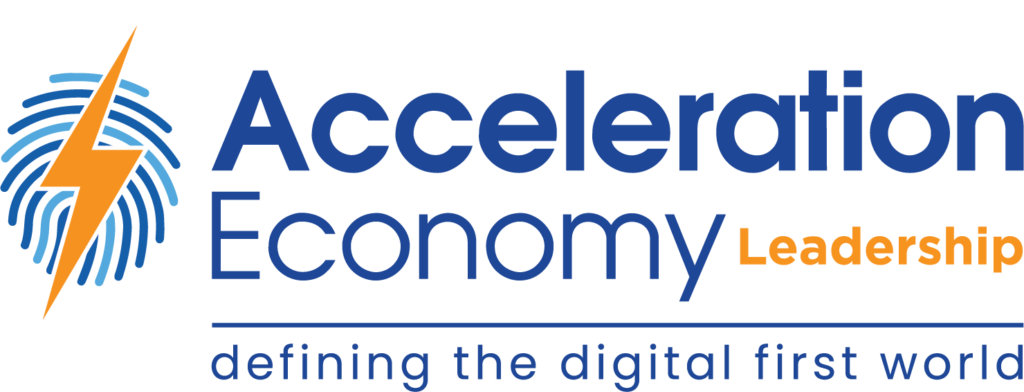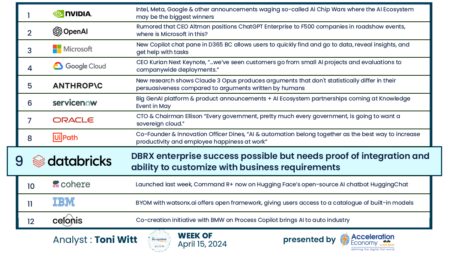When we talk about ‘The Acceleration Economy,’ we’re not kidding! We live in a time where the ability to ‘turn on a dime.’ Isn’t enough…you have ‘to leave nine cents change’ after that pivot! And then do it again, and again, as each ‘Next Normal’ smacks you in the face. So, how does an organization create and maintain the ability to make business decisions faster? Here are two ideas.
Bring Data — Good Data
“Without data, you’re just someone with an opinion.” This quote is attributed to W. Edwards Deming, one of the founders of the quality movement. This is so central to me, I even have it on a t-shirt — and so should all of you.
Decisions must be based on data. At the very least, data that tells you where you are now. Last weekend I saw something on social media (wish I could find the source): “It’s hard to get from Point A to Point B if you’re not even sure where Point A is.” That’s profound! I’ve seen too many C-Suite decisions get made without agreement on where the business stands.
In the real world of ‘messy’ decisions, where there’s never enough time or enough data, it’s important to agree on a data-based situation analysis: “We sold ‘x’ units last month” or “Orders are down ‘y’ percent since the end of last year” sound simple…but they’re harder than they look.
- How many different systems comprise the process? Is order management connected to manufacturing connected to warehouse connected to transportation? By ‘connected’ I mean AT LEAST an automated interface to minimize the human errors of Excel- or Access-based ‘interfaces.’ Ideally, the interfaces should be real-time, so decisions are made with current — and consistent — data.
- How many names do you have for a ‘fact’ (data element)? Organizations that span geographic regions, and especially organizations that have done multiple acquisitions, suffer from a ‘semantic interoperability’ problem and a ‘householding’ problem.
‘Semantics’ is the study of meaning; semantic interoperability means that all the fields that are included in an aggregation actually mean the same thing. Here’s an example: We all know what an ‘Account’ is, right? I know an organization that uses that term to mean “an instance of service delivery on a given date/time at a given site” — what we might usually define as an ‘order’ (or wait— maybe we mean ‘order line-item’?). Imagine the data confusion caused by aggregating that organization’s data with data from other organizations with different definitions of ‘Account’?
In financial services in the 1980s, when I was a CIO, we were all obsessed with the notion of a ‘household’: a sort-of family group that might individually and collectively select and use financial services products. Easy, right? ‘Same last name’ and ‘same address’ defines a household, right? Except that addresses are entered many ways. It took 30 years, but we now have standardized addresses (ever have a shopping website ask for permission to ‘correct’ an address you entered?).
Of course, not all countries have done even that. Last names are slippery things…name changes, married or maiden names, blended families, emancipated minors…I could go on and on. Organizations have to deal with varying laws and regulations: Know Your Customer (KYC), Anti-Money-Laundering, HIPAA, etc. — each of which has different definitions of ‘related parties.’ I’m not as enmeshed in financial services minutiae as I once was, but to the best of my knowledge this is still pretty messy.
Nurture Trust Among Decision Makers
Making fast decisions is HARD. As I said, you lack the time and the data you wish you could have when making ‘the optimal decision.’ But in the Acceleration Economy, ‘the perfect is the enemy of the good.’ To quote a popular Management Guru, Lt. Pete Mitchell (‘Maverick’): “You don’t have time to think up there. If you think, you’re dead.” While the C-Suite isn’t quite as bad as a fighter plane cockpit, the rule still applies to business today.
Sometimes you have no choice but to decide. I’ve already discussed a proven technique for making the quickest ‘satisficing‘ decision (as opposed to a slower ‘optimal’ decision): the OODA Loop. As I pondered the operation of OODA Loops within organizations, what became clear was the need for trust (not, as you might imagine by now, “the need for speed”) among the participants in the decision.
As a CIO, I was entrusted with a relatively large budget that was spent on arcane technical things most of my peers didn’t completely understand — and so was the CMO, the CLO, and even the CFO. Modern high-performing organizations can make risky, messy decisions because the C-Suite executives — and hopefully, the VPs, directors, and others at all levels — trust one another. Speaking as an IT executive, here’s what works for me:
Communicate Top-Down Mission, Vision, and Values
As a support group, IT often feels pretty removed from ‘the business’ of the firm. We don’t make the widgets, talk with external customers, or drive the delivery trucks. But we had better understand and embrace — or at least feel comfortable about — ‘the business’ so that we can make decisions that make sense when looked at from a business perspective.
Many IT professionals aren’t fluent in the idioms of business, unlike the authors of the mission/vision/values statements. So, it’s imperative that the CIO help the team understand WHY we’re all here, together.
Eliminate ‘Us vs Them’ Thinking
It’s vital that we break down organizational silos to speed information flow in all directions. If IT or other support departments focus on the needs of IT rather than the needs of the front-line employees who make, fix, deliver, install, and support our products or services, they’ll make decisions that are good for IT versus good for the business.
Two things that I’ve used to get support units feeling more collegial: co-location and ride-alongs.
- Co-location involves physically moving IT folks into business unit locations. Put IT ‘Billing’ apps folks in the ‘Billing Department,’ for example. And tell the IT ‘Billing Apps Manager’ that their role is NOT ‘support the app’; their role is ‘empower the Billing team to work better, faster, smarter.’ Subtle difference in wording, but profound.
- ‘Ride-alongs’ (or ‘Walk-a-mile’) involves tasking IT professionals to accompany business unit professionals as they do their jobs. Get IT folks out of their ‘Ivory Towers’ and expose them to the real-life environments of jobsites, factories, trucks, etc.
PLEASE consult your HR, safety and security, and perhaps legal departments before initiating such a program, to ensure that things go smoothly. But I predict you’ll be amazed at how much empathy can be created — in both directions — when employees work as teams.
Quick, good business decisions have never been more important and never been harder. But technology, process, and people working together are a powerful force for making the right ones.
Want more tech insights for the top execs? Visit the Leadership channel:








